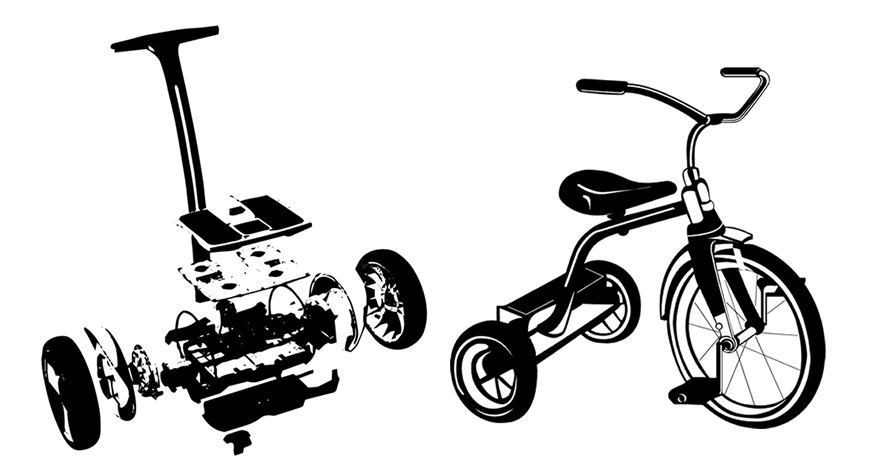November is Falls Prevention Month
We bring you some thoughts on the topic. Here’s #2 in a series:
THE SEGWAY VS. THE TRICYCLE. WHY HUMANS ARE THE HIGH-TECH SCOOTERS OF THE ANIMAL WORLD
Segways have two wheels. In order to remain upright, a Segway requires 5 gyroscopes, 2 level sensors and 10 microprocessors working together to adjust the power to the wheels 100 times per second. A tricycle requires…nothing.
Humans, like Segways, somehow remain upright and stable on two points of contact. We use eyesight, inner ear sensors, pressure points on the soles of the feet, and lots of cognitive power and leg strength to accomplish the same trick. Even more impressive, when we walk we spend most of our time on only one leg. The problem is, our sensors, stabilizers, processors and motors degrade as we age.
Think you don’t need all systems working at 100% to remain steady? Try balancing on one leg with your eyes closed.
CDC statistics on deaths due to injury tell the story: Below age 65 unintentional falls barely make the top ten list. Over age 65, falls are the not only the #1 cause of death by injury, they equal all other top-ten causes combined and dwarf the #2 cause of death by a factor of four.
Fortunately there’s a simple way to lower the risk of falls. Hint: try the same balance test with your hand on a desk.







